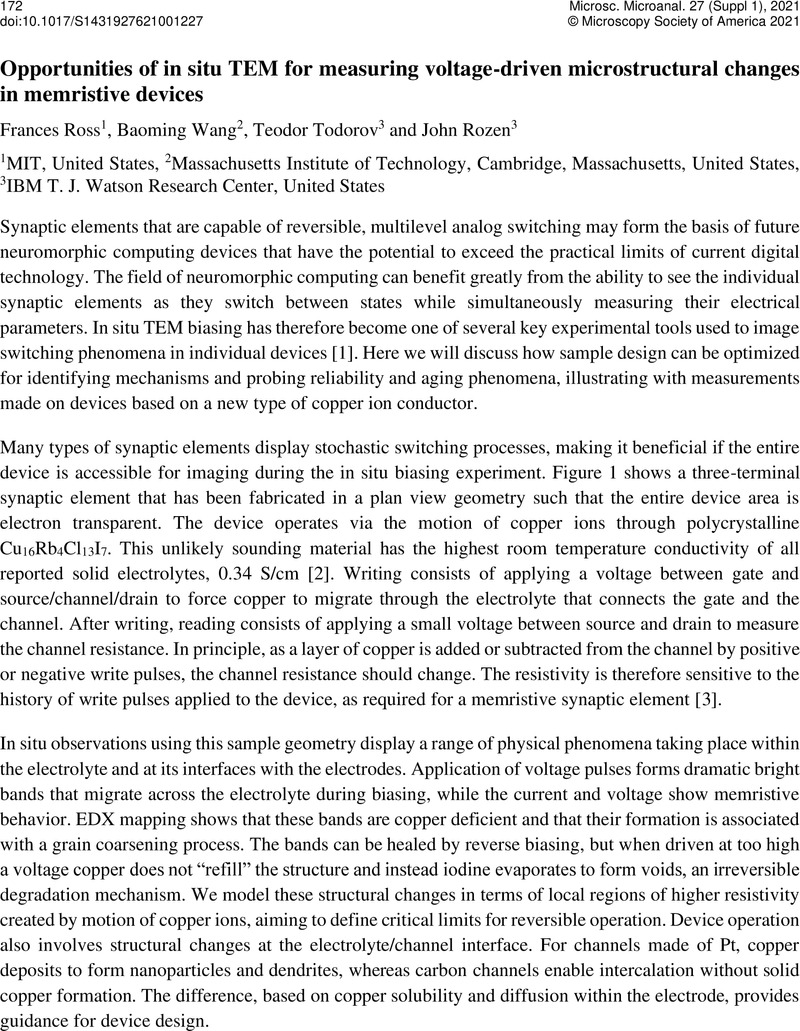No CrossRef data available.
Article contents
Opportunities of in situ TEM for measuring voltage-driven microstructural changes in memristive devices
Published online by Cambridge University Press: 30 July 2021
Abstract
An abstract is not available for this content so a preview has been provided. As you have access to this content, a full PDF is available via the ‘Save PDF’ action button.

- Type
- Investigating Phase Transitions in Functional Materials and Devices by In Situ/Operando TEM
- Information
- Copyright
- Copyright © The Author(s), 2021. Published by Cambridge University Press on behalf of the Microscopy Society of America
References
Sun, W., Gao, B., Chi, M.., Xia, Q., Yang, J. J., Qian, H. and Wu, H., Understanding memristive switching via in situ characterization and device modeling. Nat Commun 10, 3453 (2019).CrossRefGoogle ScholarPubMed
Takahashi, T., Yamamoto, O., Yamada, S. and Hayashi, S., High Copper Ion Conductivity of the System CuCl - CuI - RbCl, J. EIectrochem. Soc. 126, 1654 (1979).CrossRefGoogle Scholar
Todorov, T., Ando, T., Ross, F. M., Ott, J. A., Tang, J., Bishop, D., Collins, J., Narayanan, V. and Rozen, J., Copper-Based 3-Terminal Synaptic Cell with Multiple Resistance Levels, Electrochem. Soc. Meeting Abstracts 23, 1165 (2019).Google Scholar
Kim, S. et al. , “Metal-oxide based, CMOS-compatible ECRAM for Deep Learning Accelerator,” in 2019 IEEE International Electron Devices Meeting (IEDM), 35.7.1 (2019).CrossRefGoogle Scholar
Waser, R., Dittmann, R., Staikov, G., and Szot, K., “Redox-Based Resistive Switching Memories - Nanoionic Mechanisms, Prospects, and Challenges,” Adv. Mater., 21, 2632 (2009).CrossRefGoogle Scholar
This work was partially supported by the MIT-IBM Watson AI Lab and made use of facilities and instrumentation supported by NSF through the Massachusetts Institute of Technology Materials Research Science and Engineering Center DMR-1419807, as well as facilities at MIT.nano.Google Scholar




